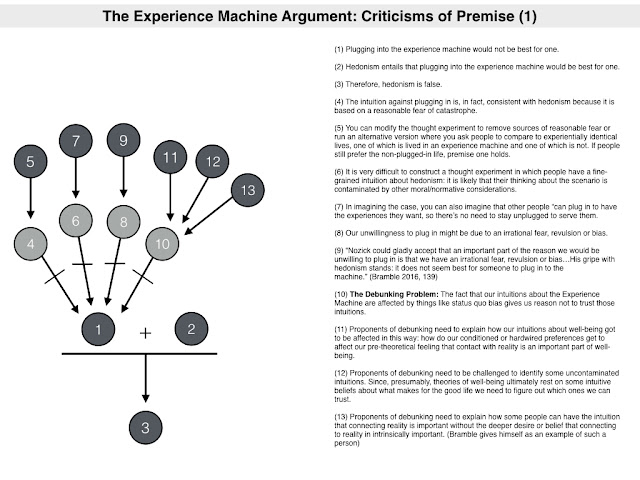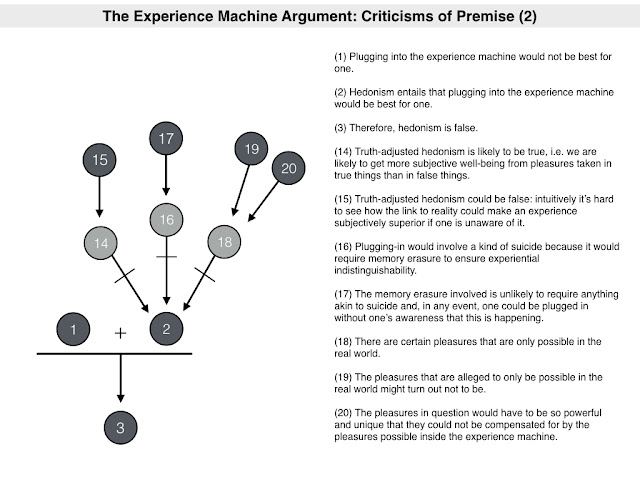Freedom is important. Modern liberal societies are built around it. Citizens fight for their fundamental freedoms — rights to speech, thought, religious expression, education, work and so on — and governments are evaluated relative to their success in securing these freedoms. But liberal freedom is a highly contested concept. What does it really mean to say that we are ‘free’? When is our freedom undermined or compromised? Different theories say different things. For example,
Quentin Skinner — an intellectual historian who has focused on the evolution of freedom — has developed a ‘genealogy of freedom’ which maps out three major concepts of freedom that have been articulated since the mid-17th century, all of which have sub-concepts, and all of which vary in their answer to the questions just posed.
This diversity of opinion is particularly important when we consider the practical implications of our commitment to freedom. One practical implication I am particularly keen on considering is how freedom is affected in an age of algocratic governance. If digital technologies are going to be surveilling my every move, if they are going to be hoovering up my data and mining it for useful information, and if on foot of this they are going to be recommending particular courses of action to me or, even more extreme, if they are going to be making decisions on my behalf, then I would like to know if this undermines my freedom or not.
Intuitively it seems like increased algocratic governance cannot fail to affect my freedom in some way. But it turns out that traditional liberal theories of freedom are not well-equipped to explain why. That, at any rate, is the thesis presented in Hoye and Monaghan’s article ‘
Surveillance, Freedom and the Republic’, which appeared a couple of years back in the European Journal of Political Theory. Although ostensibly about digital surveillance, their article is really (as we shall see) about the freedom-undermining consequences of algocratic governance more generally.
The thesis they present has three parts to it. First, they argue that existing approaches to understanding the impact of algocratic governance on freedom are limited due to their state-centric focus. Second, they argue that the republican concept of freedom as non-domination (FND) offers a better way of understanding the impact of algocratic governance on freedom. And finally, they argue that even the republican concept is limited in its ability to understand the phenomenon and needs to be modified to address the freedom-undermining consequences of algocratic governance.
I want to go through each part of this thesis in the remainder of the blogpost. I do so with a general caveat. What I am about to say is heavily influenced by Hoye and Monaghan’s article, but I found parts of their work difficult to interpret because it was caught up in disputes within surveillance scholarship — disputes in which I am not invested. As a result, my presentation of their argument shifts focus to what I care about, namely:
different ways of understanding the threat of algocracy.
1.Surveillance and Algocracy: How are they linked?
Before I get into the meat of Hoye and Monaghan’s argument, I should say something about the connection between surveillance and algocracy. I’m interested in the latter but their article is explicitly about the former. To be more precise, it is about mass digital surveillance and its political consequences. How can I justify interpreting their argument as being about algocratic governance and not surveillance?
The answer is that I don’t see these as separate topics. Indeed, I think that most contemporary scholarship on mass digital surveillance is best understood as part of a more general scholarly effort to understand the consequences of algocratic governance.
Elsewhere, I have defined algocratic governance as the use of data-mining technologies to nudge, manipulate, constrain and structure human behaviour. I take a broad view of the phenomenon, arguing that algocratic modes of governance can be public and/or private in nature and origin. In fact, I think many of the more interesting forms of algocratic governance are private in origin — developed from technologies created by private enterprise — which sometimes get fed back into public governance systems. The predictive policing and recidivism algorithms used in criminal justice systems are good examples of this.
The data-mining technologies that undergird algocratic modes of governance are dependent on surveillance. In order for the systems to work, they must have a seedbed of data upon which to work their statistical magic. In the modern era, this seedbed of data is increasingly ‘big’ in nature. More and more of our lives are becoming digitised and as this happens more and more of what we do is being digitally surveilled. The information collected is brought together and made sense of by data-mining technologies. Oftentimes there is no specific rationale or intention behind the collection of data. Institutions have developed a ‘collect everything’ mentality because they hope that machine learning systems will find useful patterns in the data after the fact.
There is, consequently, an intimate link between algocractic governance and surveillance. The connection is not logical or necessary. It is possible to construct algorithmic governance systems that do not rely on mass surveillance. But it does seem to be inherent to the technology and philosophies associated with algocratic governance in the world today. Thus, I think that discussions of mass surveillance and its implications for freedom are intimately tied into discussions about algocracy and freedom.
What’s more, I think it is important to highlight the link between surveillance and algocracy. This is because many of the freedom-related concerns about surveillance only make sense if we assume that the surveillance is tied into broader systems of governance. In other words, it is because the data collected could be used to nudge, manipulate, structure and constrain your behaviour that most concern arises. If all the data was being collected and shipped off to a distant galaxy — with no hope of it ever being used in governance-related decisions — the debate would be almost moot (though some might insist that there is an intrinsic harm to violations of privacy).
2. Problems with Traditional Understandings of the Phenomenon
That’s all by way of introduction. Now let’s get into the heart of the matter: does algocratic governance undermine freedom? Hoye and Monaghan express some dissatisfaction with the existing debate on this question. As they see it, there are two major normative schools of thought on the topic:
Marxist social control: This school of thought conceives of surveillance as a form of coercive social control instituted from the ‘top-down’. People are monitored by the state in order to ‘effect discipline’ and to maintain the capitalist order.
Liberal freedom as non-interference: This school of thought is wedded to the traditional liberal conception of freedom as non-interference, i.e. the absence of actual interference in how one acts and behaves. It conceives of state surveillance as a potential form of interference in privacy rights (which are essential for liberal freedom) and demands regimes of oversight and transparency. It also focuses on the concept of informed consent as a means to waive one’s privacy rights.
While both of these schools of thought have their merits, Hoye and Monaghan are dissatisfied with them because they tend to fetishise (my word) the state as potential source of coercion and interference. As such, they tend to ignore (or downplay) the possibly more pervasive forms of algocratic governance which are private or social in nature (think Facebook, Google, Amazon, Apple etc) and to accept the fact that these governance tools tend to secure some form of consent from their subjects. They think a third school of thought does a better job in covering these more pervasive forms of algocractic governance:
Foucauldian Governmentality: This school of thought, inspired by the work of Michel Foucault, looks beyond state-centric modes of social control. It suggests that the dominant social ideology (some form of neoliberalism) involves us all in the process of disciplining and controlling our bodies (and selves) through surveillance and governance. It conceives of algocractic governance as just the latest manifestation/tool for implementing this ideology.
The Foucauldian school of thought does a great job identifying non-state sources of interference and in highlighting the role of voluntary acquiescence to algocractic governance, but it too suffers from defects. A major one, in Hoye and Monaghan’s view, is that it tends to be non-normative in nature and to reject discussions of ‘freedom’. So they wonder whether there is an alternative model of freedom that is normative in nature and which does justice to the pervasive (and sometimes consensual) nature of algocratic governance. They think republican freedom as non-domination can do the trick.
3. Freedom as Non-Domination
The republican theory of FND has ancient roots but is best-known through its modern revival. The work of Philip Pettit has been particularly influential in this regard. In his 1999 book
Republicanism, and in several subsequent books and papers, he has gone to great lengths to articulate and defend the theory of FND.
He usually does this by distinguishing it from the more traditional liberal theory of freedom as non-interference. The traditional theory focuses on actual sources of interference in one’s life; not on potential sources of interference. So to say that your freedom is undermined according to the principles of non-interference, you have to actually point to some interfering act: somebody threatening you with a knife or making a coercive offer; somebody actually doing something to affect your rights/interests without your consent.
Pettit finds this unsatisfactory because it cannot explain our intuitions about the lack of freedom in certain cases where there is no actual interference in what someone does, but there is some lurking potential for interference. He has several go-to examples of this. The most well-known is the ‘happy slave’ thought experiment, but I’m sick of repeating this so I’ll opt for another of Pettit’s examples, taken from Henrik Ibsen’s 1879 play
A Doll’s House.
The play’s main characters are Torvald and his wife Nora. Torvald is a young successful banker. By law, he has considerable power over his wife. He could, if he so desired, prevent her from doing many things. But he doesn’t exert those powers. He is happy for Nora to do whatever she desires, within certain limits. Pettit puts it like this:
Torvald has enormous power over how his wife can act, but he dotes on her and denies her nothing— nothing, at least, within the accepted parameters of life as a banker’s wife…She has all the latitude that a woman in late nineteenth-century Europe could have wished for.
(Pettit 2014, xiv)
But is she free? Pettit thinks not. The problem is that Nora lives under the domination of Torvald. If she wants to do anything outside the accepted parameters of a banker’s wife, she will have to seek his permission. He may not interfere with her actions on a daily basis, but he stands poised to do so if she ever gets out of line. She has to ingratiate herself to him, match her preferences to his, if she is to live a trouble-free life. Pettit argues that this is contrary to true freedom:
To be a free person you must have the capacity to make certain central choices—choices about what religion to practice, whether to speak your mind, who to associate with, and so on—without having to seek the permission of another. You must be able to exercise such basic or fundamental liberties, as they are usually called, without having to answer to any master or dominus in your life.
(Pettit 2014, xv)
This, then, is the essence of FND.
Elsewhere, I have adopted definitions of it it as requiring the ‘robust’ absence of interference in your life, i.e. the absence of interference across numerous possible worlds, not just in this world. But there is slightly more to it than that. It also requires a lack of accountability or answerability in certain core areas of life. Put more succinctly, it requires both
depth (robust absence of interference) and
breadth (across several domains of choice).
From this foundation, Pettit builds a rich political philosophy. He thinks FND gives us a full blueprint for a just society. This just society requires political and social institutions that allow for the absence of
dominium (i.e. private power over another’s life) and
imperium (i.e. civic or public power). Of course, this isn’t perfectly achievable. In order to remove dominium you often have to have an elaborate set of civic institutions that create the infrastructure for meaningful FND and you have to grant this infrastructures powers to intervene in someone’s life. But this is acceptable, according to Pettit, if the interference is non-arbitary and citizens have some meaningful input into the processes underlying the construction and operation of these institutions.
There is more to it, of course. But this sketch should suffice for present purposes.
4. Algocracy and Freedom as Non-Domination
Why are Hoye and Monaghan enthused by FND? The answer lies in how FND is more sensitive than freedom as non-interference to the ways in which power can undermine freedom. FND does not require actual interferences to conclude that something undermines your freedom. If you live in the shadow of some potential source of interference — if you have to adapt your behaviour to that shadow — your freedom is being compromised.
Furthermore, FND does not fetishise the state as a source of unfreedom in the same way that some liberals do. It thinks that sources of unfreedom are pervasive, include both the state and private actors, and sees the state as an essential tool for deconstructing private power. The latter is not unusual in mainstream liberal theory, but is ignored or downplayed by libertarians/classical liberals, and when compared to mainstream liberal theory FND has the advantage of seeing more potential sources of private unfreedom.
This is all useful because algocratic governance systems seem to undermine our freedom in a way that is similar to how Torvald undermines Nora’s freedom in
The Doll House. Where Nora lived in the shadow of Torvald’s will; we live in the shadow of mass surveillance systems. These systems are collecting information about us at all times. This information is used to limit domains of choice, and can also be used to interfere with us at a future date. The systems might be happy to leave us alone so long as we operate within their pre-defined parameters, but as soon as we act outside them — as soon as we start doing things that are unanticipated by the system’s algorithms — we will run into roadblocks. Focusing in particular on the problems arising from state surveillance, Hoye and Monaghan put it like this:
Indiscriminate mass state surveillance is ipso facto dominating as it demands the universal ingratiation of citizens who must follow rules that are barely expressed in law, but manifest culturally as norms of fear and suspicion.
And the same set of concerns clearly applies beyond the state, to private modes of algocratic governance, even if they are formally consented to.
To put the case in argumentative form:
- (1) Freedom as non-domination requires the robust absence of arbitrary interference across core domains of life.
- (2) Algocratic modes of governance (specifically those including mass surveillance) bring with them the possibility (if not the actuality) of arbitrary interference in certain core domains of life.
- (3) Therefore, algocratic modes of governance undermine our freedom.
More would probably need to be said in defence of premise (2) — more examples given of how this dynamic plays out in reality — but this gives a sense of how FND could be effectively used in the algocracy debate.
5. Two Limitations of FND in relation to Algocracy
For all their initial enthusiasm about FND, Hoye and Monaghan think that it has certain limitations when it comes to debates about algocratic modes of governance. These limitations are not immediately obvious from the sketch I just gave. They emerge only when you get into some of the finer details of FND. Still, they could be significant and might require some reshaping of the concept.
The first problem has to do with
sources of domination. In his defence of FND, Pettit is clear that not all forms of domination count from a political perspective. It is probably true to say that you live under the domination of the weather, for example. You have to live your life within the parameters it sets down. But that doesn’t mean that domination-by-the-weather is a politically relevant source of domination. You need to avoid the mistake of seeing everything — every physical law or limit — as a source of domination. Pettit usually does this by limiting his focus to sources of domination that are rooted in
agents, i.e. humans or corporate bodies that have agential powers.
The problem, as Hoye and Monaghan see it, is that mass surveillance is
functionally agentless. The domination does not come from the actions or intentions of any particular agent. Rather, it comes from the surveillance network as a whole:
…one of the distinctive features of surveillance power is that it is functionally agentless. The new power of surveillance functions as though there were no ascribable agents — not because there are no agents within the aggregate, but because the levels of imbrication, secrecy, and redundancy are so high as to make individual agents inconsequential. The network itself affects ingratiation.
(Hoye and Monaghan 2015, 9)
So FND would need to be modified so that it accepted at least some forms of agentless power.
For what it is worth, I am not entirely convinced by this line of argument. Pettit himself has written quite a bit about the possibility of group agency and the conditions that would need to be met in order for a corporate entity to count as an agent. And I, myself, have suggested that algocratic forms of governance meet certain conditions of agency. So I think a more detailed argument is needed here before we conclude that FND needs to be modified. I accept that there may be complex technological systems that are not like agents in any meaningful sense but I wonder how helpful it is to modify FND to accommodate such systems if we have no real control over how they function. Pettit himself suggests that the ability to change the system of dominance is key to it counting from a political perspective.
The other limitation identified by Hoye and Monaghan is a bit more esoteric. As noted above, one feature of Pettit’s theory is that it requires breadth of freedom, i.e. freedom across many domains. Pettit insists that a range of governance structures (public health systems, educational systems, social welfare etc) need to be created to facilitate that breadth. One fear that Hoye and Monaghan have is that republicans could view surveillance as an essential tool for ensuring that breadth. After all, these governance structures will need to collect and monitor data about their subjects if they are to ensure robust and broad freedom. Republicans might then think that these systems can help dismantle sources of domination.
Hoye and Monaghan argue that this is wrong. Surveillant power, as they see it, is
transversal — it cuts across traditional institutional boundaries. Republicans seem to think that you can create institutions (public and private) that compete with one another in order to monitor and limit domination, but because surveillance is transversal, it doesn’t respect these institutional competitions. Its transversal nature tends to aggravate the problem of domination:
When everyone can surveil and with relatively low cost of entry, domination is not minimised by competition between institutions and levels of government. It is maximised.
(Hoye and Monaghan 2015, 13)
I tend to think this is right, but note that it runs deeply contrary to the claims made by sousveillance activists. They think that lowering the cost of entry into surveillance, turning the tools of surveillance back on the governors, will accentuate freedom.
Okay, that’s where I am going to leave it. Hoye and Monaghan say a lot more in their paper. They go on to discuss potential solutions to the problem of domination by surveillance networks. But I’m not going to follow that discussion. I just wanted to outline the core argument about algocracy and freedom as non-domination.











